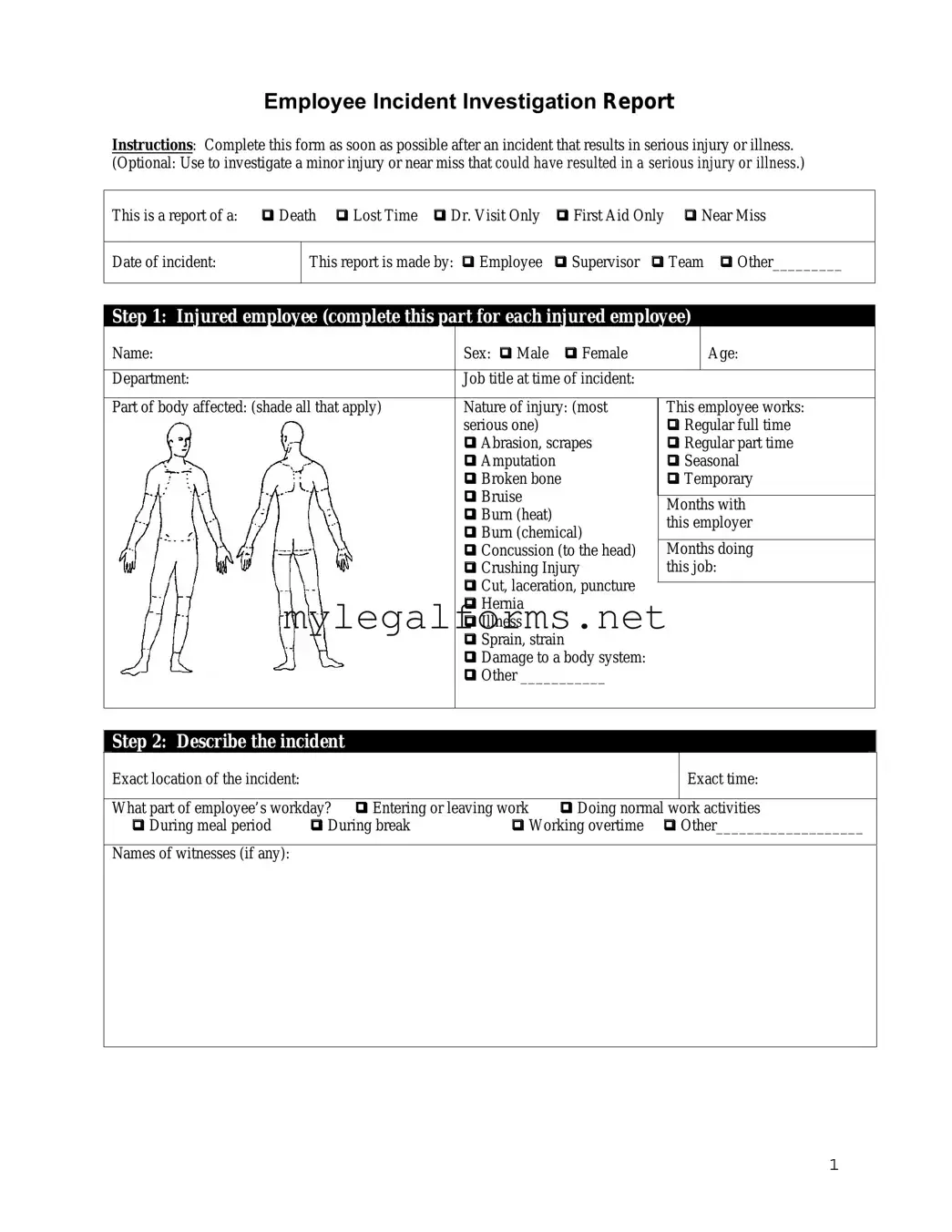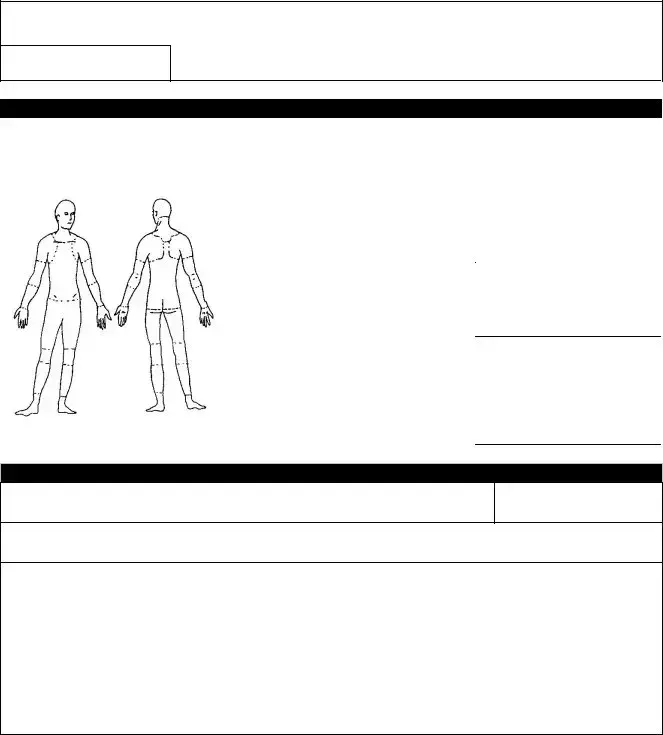When an employee experiences an accident at work, it is crucial to document the incident accurately and thoroughly. The Employee Accident Report form serves as a key tool in this process, capturing essential details about what occurred. This form typically includes sections for the employee's information, the date and time of the accident, and a description of the events leading up to the incident. Witness statements may also be recorded to provide additional perspectives. Furthermore, the form often asks for information about any injuries sustained and the immediate response taken, such as first aid administered or whether emergency services were called. Completing this report not only helps in addressing the specific incident but also plays a vital role in preventing future accidents by identifying potential hazards in the workplace. By ensuring that all relevant details are captured, the form aids in the investigation and can assist in any necessary claims or legal matters that may arise from the accident.



